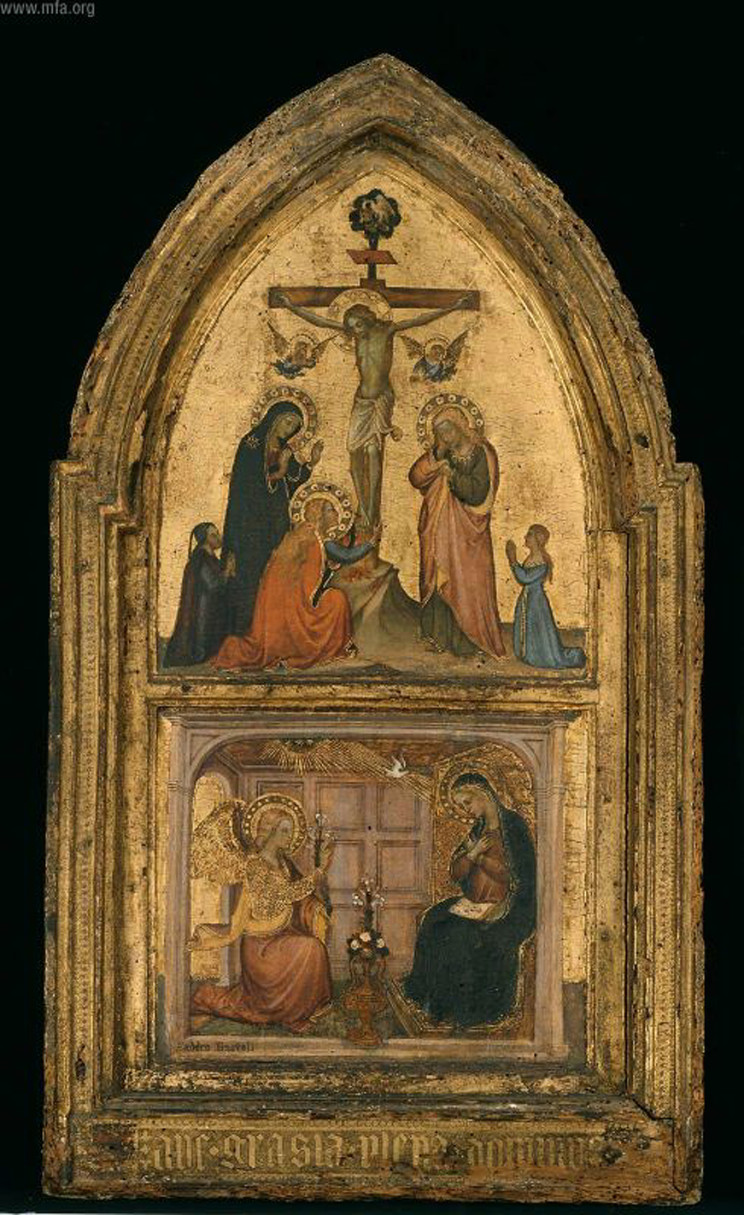 This week, we’ll have what may be the last opportunity in our lifetimes to experience the intersection of Good Friday and the feast of the Annunciation. We invite you to read Kevin Birth’s thoughtful exploration of this calendrical coincidence below, and to consider meditating on John Donne’s poetic exploration of the same coincidence tomorrow, on Good Friday itself. This post came about as a result of a conversation between Andy Walsh, author of ESN’s Science Corner, and Kevin Birth. See previous posts here, here, and here. Kevin is an anthropologist who studies cultural concepts of time, and has published several articles on the use of calendars to create meaning, including the articles “Calendars: Representational Homogeneity and Heterogenous Temporality” (Time and Society, 2011), “Signs and Wonders: The Uncanny Verum and the Anthropological Illusion” in Echoes of the Tambaran, and chapter 3 of his book Objects of Time.
This week, we’ll have what may be the last opportunity in our lifetimes to experience the intersection of Good Friday and the feast of the Annunciation. We invite you to read Kevin Birth’s thoughtful exploration of this calendrical coincidence below, and to consider meditating on John Donne’s poetic exploration of the same coincidence tomorrow, on Good Friday itself. This post came about as a result of a conversation between Andy Walsh, author of ESN’s Science Corner, and Kevin Birth. See previous posts here, here, and here. Kevin is an anthropologist who studies cultural concepts of time, and has published several articles on the use of calendars to create meaning, including the articles “Calendars: Representational Homogeneity and Heterogenous Temporality” (Time and Society, 2011), “Signs and Wonders: The Uncanny Verum and the Anthropological Illusion” in Echoes of the Tambaran, and chapter 3 of his book Objects of Time.
Those who know me know that I am fascinated with coincidences in time—unusual moments generated by the intersection of different cycles. This year is unusual in that Good Friday occurs on the same calendar date on which Annunciation is normally celebrated. The Church deals with this seeming conflict of holy days by moving Annunciation to the first day after the Octave of Easter.
We are not used to a day of celebration falling on a solemn day like Good Friday. Yet, we commemorate Jesus’ conception and crucifixion together every time we recite one of the Church’s creeds.
So as someone who loves to meditate on temporal coincidences, I think highlighting the unusual coincidence this year is an opportunity to contemplate the relationship between conception and death, and Jesus’ conception and death in particular.
This coincidence is relatively rare, and it is unlikely that any of us will grace this planet long enough to witness it again in our lifetimes. The last time it occurred was 2005, but the next time it will occur will be 2157.
The reason for the coincidence is that Easter and Annunciation are determined by different cycles. The date of Annunciation is a fixed date, March 25th. The date of Easter varies because it is determined by the interaction of lunar, solar, and weekly cycles. The Council of Nicaea declared that it should be the first Sunday after the first full moon after the spring equinox. In the Gregorian calendar, the sequence of Easter dates repeats every 5,700,000 years—that is mind-boggling.
Every time we recite one of the creeds we affirm the connection of Jesus’ conception, birth, life, death and resurrection. We affirm that Jesus was fully human and fully God. As fully human, he had to be conceived, and as a human, he died. This Friday ties together these two facts by bringing together the two key celebrations of Jesus’ humanity, and the crucial role that humanity plays in our salvation.
The dialectic of conception and death is a powerful one. There are many ways to think about it and to explore the mysteries of the connection between the two. This Friday is a particularly unusual coincidence that brings them together, and in so doing, provides food for thought.
And we can look forward to 2035, when the date of Annunciation will fall on Easter Sunday, thereby encouraging a special day of meditation on Jesus’ conception and resurrection!
Image credit: Giuliano di Simone. Annunciation; Crucifixion, from Art in the Christian Tradition, a project of the Vanderbilt Divinity Library, Nashville, TN.http://diglib.library.vanderbilt.edu/act-imagelink.pl?RC=50274 [retrieved March 22, 2016]. Original source: http://www.mfa.org/.
Kevin Birth is a professor of anthropology at Queens College of the City University of New York. He studies cultural concepts of time in relationship to cognition, and has conducted ethnographic research in Trinidad and on the current leap second controversy. His publications and presentations cover a wide ranging array of topics including chronobiology and globalization, comparative calendars, timekeeping in Roman Britain, culture and memory, cognitive neuroscience, early modern clocks, and ideas about roosters in the Middle Ages. He is the author of three books: Any Time is Trinidad Time (University Press of Florida), Bacchanalian Sentiments (Duke University Press), and most recently Objects of Time (Palgrave Macmillan).

In the interest of full disclosure, I was not aware of Donne’s poem–that was an addition by the managers of this blog. Thank you!
If you like Calendrical Coincidence you might be interested in this article I posted several years ago about the timing of Holy Week in 33AD.
http://newwinemission.blogspot.com/2013/03/holy-week-33ad.html
Thank you!